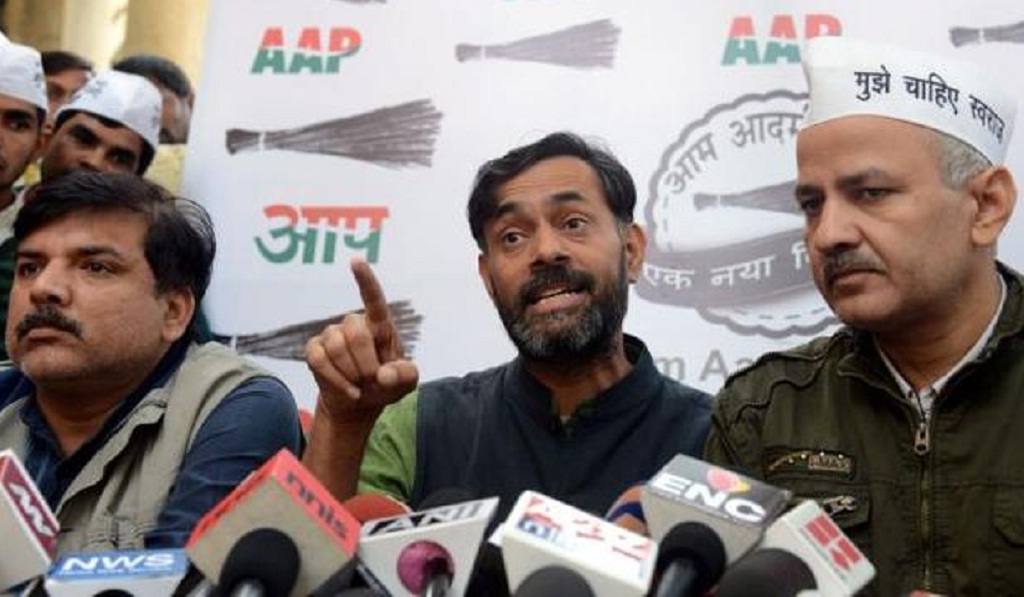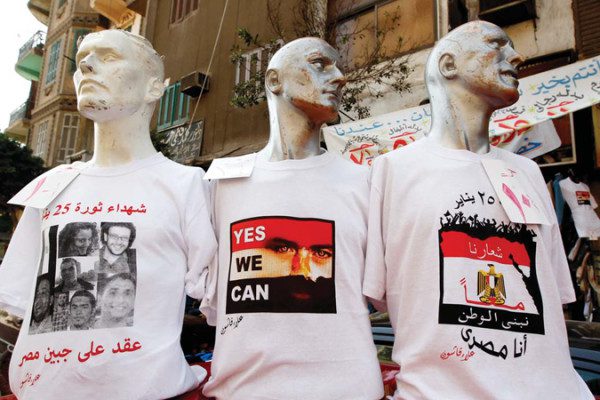Taking a cue from the recent leaked audio file of AAP chief Arvind Kejriwal, Thomas Crowley takes a look at the larger media culture of stings, leaks and scandals and how this drive for ‘transparency’ may not be as benevolent or innocent as it claims to be…
“An audio tape surfaced.” Variants of this phrase, always in the passive voice, were repeated again and again in news reports covering the ongoing drama of the internal power struggle in the Aam Aadmi Party. The audio tape in question involved party head Arvind Kejriwal allegedly plotting to poach Congress MLAs. The tape was recorded on the cellphone of former AAP MLA Rajesh Garg. Many of the initial media reports, in their eagerness to get the story out quickly, made the unwarranted assumption that Garg himself had leaked the tape; Garg himself strenuously denied this, and claimed that he had only shared the tape with Kumar Vishwas.
One of the many ironies of this mini-scandal was that the leaked tape – meant to expose the truth with clarity and transparency – had a very mysterious emergence in the media. Why was it released so long after its initial recording? Who would benefit from this leak? And most importantly, who had released it, and to whom? None of this was evident from the many breathless news stories about the leak, many of which were reveling in another of the fiasco’s ironies: that the tireless promoter of stings had fallen victim to one. (India Today probably put it most succinctly, in a tweet: “Sting King Stung.”)
In addition to the uncertainties about the source of the leak, there were disputes about the content of the tape. Many media sources were quick to label Kejriwal’s actions as “horse-trading.” After all, he was openly talking about drawing Congress politicians to his own party. Another senior party leader, Ashish Khetan, disputed this interpretation, though, saying that political realignments were a fact of life, and that the discussion on the tape did not amount to “horse-trading” because Kejriwal did not propose offering any material inducements to the Congress MLAs.
These uncertainties and interpretative ambiguities would come as no surprise to those who have studied “sting” culture and the present-day discourse surrounding transparency. A number of scholars, many with ties to the Sarai programme at the Centre for the Study of Developing Societies (CSDS), have regarded the rise of the sting with a critical eye, questioning the drive for “transparency” in all aspects of life.
Ravi Sundaram, co-founder of Sarai, has emphasised the importance of this line of questioning, suggesting that transparency is the “axiomatic progressive slogan” of the present day and thus deserves scrutiny. Shaunak Sen, a social media research Fellow at Sarai, has taken this suggestion further, writing a series of blog posts about the role of the sting in modern-day media and culture. Sen traces the emergence of the sting in India, starting with the groundbreaking “Operation Westend” carried out by Tehelka in 2001, exposing large-scale government corruption. He describes the elation and hope inspired by the emergence of the sting, noting the “great faith in the capacity of new media technologies to exorcise corruption and introduce systemic transparency.”
At the heart of this faith was the assumption that the audio-visual evidence from stings represented the unvarnished truth. Tarun Tejpal himself suggested that stings were like X-rays, exposing hidden truths with unmistakable clarity. However, as Sen notes, the actual form of sting tapes is typified by blurriness, fuzziness, graininess, scratchiness – in short, a lack of clarity. This is the sting aesthetic kicked off by Tehelka and Westend. At first, this was simply a by-product of the technology used at the time, which by today’s standards was hopefully primitive. However, even with the rise of high-definition cameras, steady-cams, and the like, the low-fi aesthetic was still preferred since it had come to signify, paradoxically, clear and transparent truth.
This signification is particularly problematic since sting videos and audios are often edited heavily in an attempt to highlight their apparent truthfulness. One of the most fascinating parts of Sen’s research is his interview with a sting video editor named Ajitesh Tyagi. The first insight is simply that ‘sting video editor’ is an actual profession. The deeper insight is that typical sting videos, at least those appearing on mainstream news channels, are heavily edited.
Tyagi’s interview is worth quoting at length: “If the first few moments are shaky and inaudible it is good because is raises interest in the video and more importantly makes it clear that this is a real authentic video… It also makes sense to keep a ticking time-code of the handy-cam on the image. All of this creates an overall atmosphere that heightens the sense of intrigue and reality in any video. Sting video editing is an art that requires practice.”
AAP is very much a part of the sting media culture, although their preference is for “raw, unedited” footage. One of AAP’s leaders, and one of the main players in the current intra-party fighting, is Ashish Khetan, mentioned above as a prominent defender of Kejriwal. Khetan is a well-known journalist who worked for Tehelka during its sting glory days. His biggest story was an expose on the Gujarat riots. The product of a series of stings, the story featured several prominent Hindutva leaders boasting of their role in the riots, and implicating the Gujarat government in their spread. Such revelations convinced Khetan of the value of the sting, so much so that he later said, in an interview with Sen that “opacity can never be justified, and barring sensitive information where disclosure can foreseeably endanger innocent lives, transparency is always progressive.”
But the current AAP controversies suggest that the supposed “transparency” of stings can operate in decidedly opaque ways. Even before the MLA-poaching sting, secret recordings were being used as weapons in intra-party fighting. On March 3, a recording surfaced (again, note the passive voice) featuring a cell phone conversation between the journalist Chander Suta Dogra and AAP member Bibhav Kumar, now secretary to Kejriwal. This recording, presumably made by Kumar, was used against Yogendra Yadav, with the claim that he was trying to plant negative stories about AAP in the media. Yadav denied this, and further questioned the integrity both of the journalist who so willingly (though, apparently, falsely) revealed his source and the party members who used secret recordings as a way of attacking their rivals within the party. Despite the presence of Khetan’s recording, the whole incident degenerated into a war of words, and further distrust was sown in the AAP leadership.
This points to the danger lurking in calls for total transparency. If everyone can always see what everyone else is doing, everything becomes spin and image-protection. Everyone is always on guard, careful to project a presentable picture. Candor is hardly rewarded. If this sounds familiar, it’s because the world of social media has created just this kind of “transparency,” obliterating the divide between public and private. As the novelist and critic Zadie Smith has argued, this is a world that is “falsely jolly, fake-friendly, self-promoting, slickly disingenuous.” This, in part, is the world that AAP is creating, and it is hardly a surprise that the party itself has been one of the first victims of this new world’s pitfalls.


